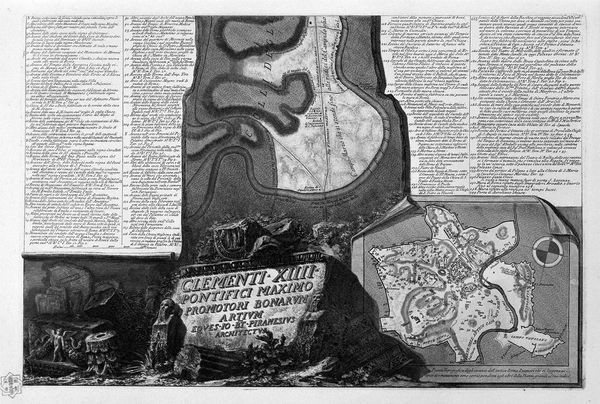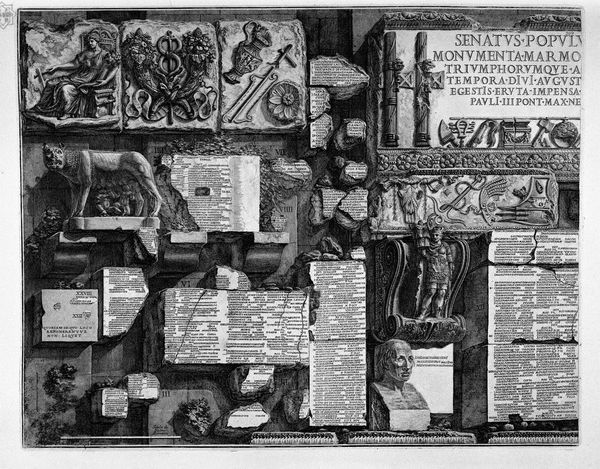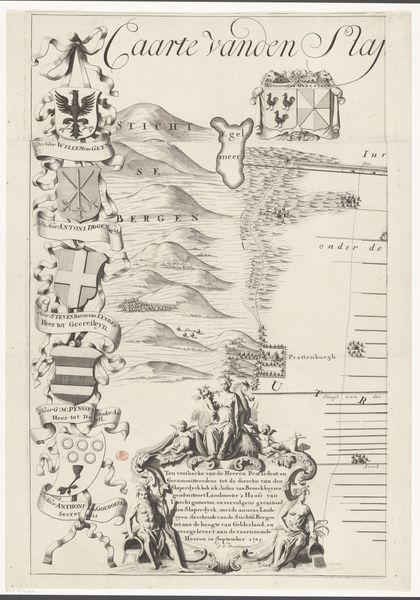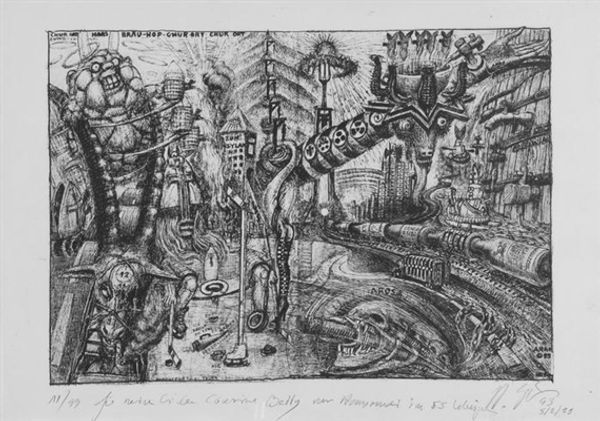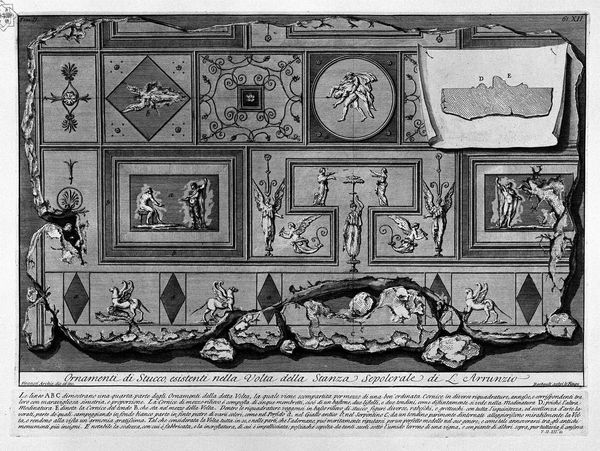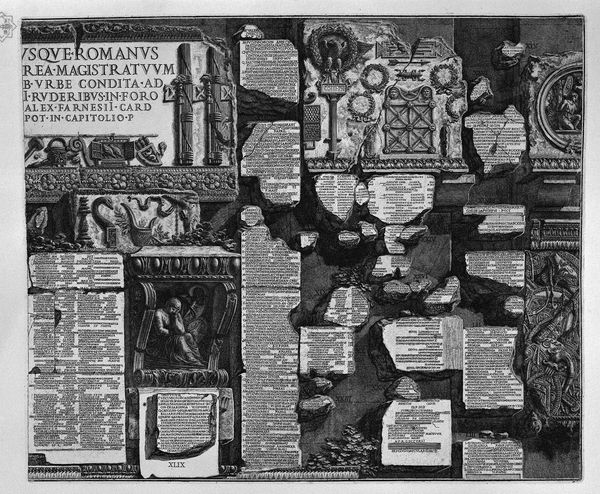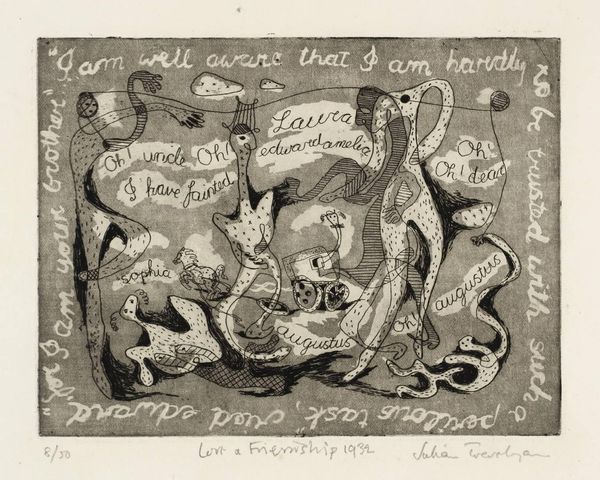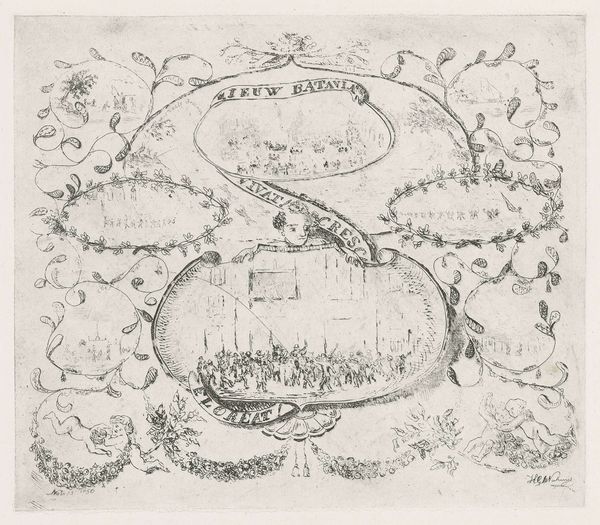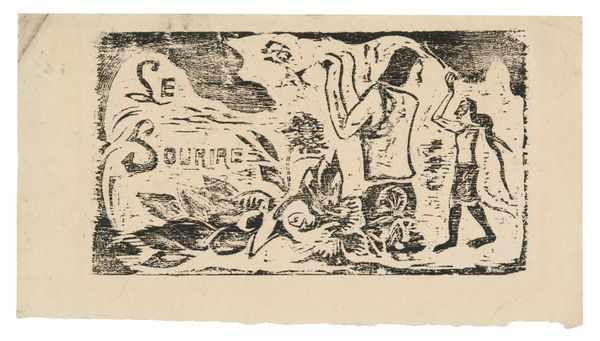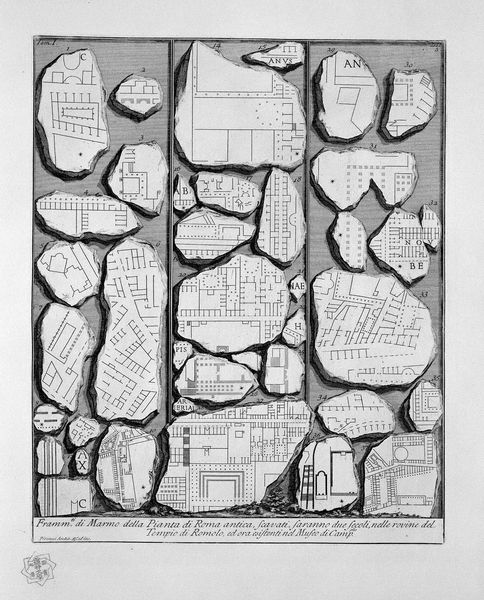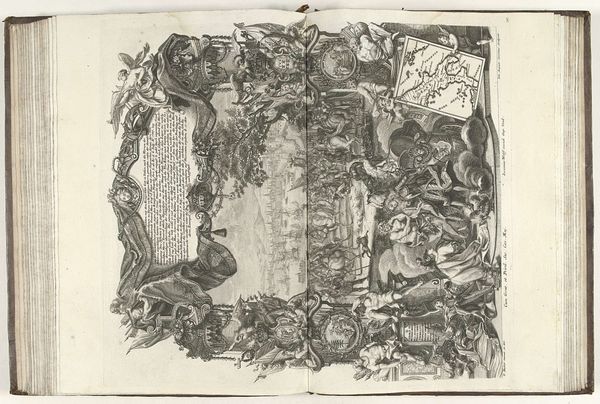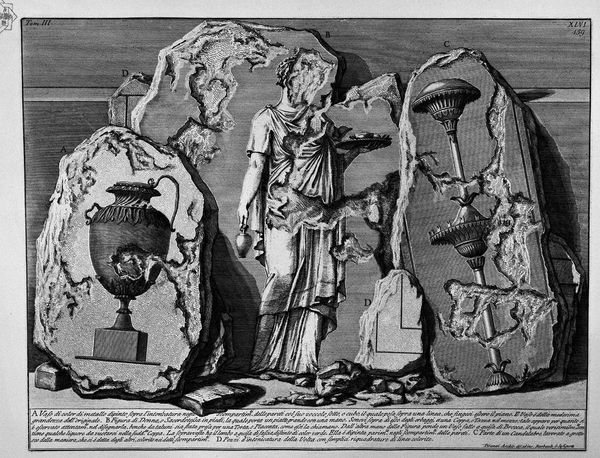
The Roman antiquities, t. 1, Plate II. Map of ancient Rome and Forma Urbis. 1756
0:00
0:00
drawing, graphic-art, print, etching, ink, engraving
#
drawing
#
graphic-art
# print
#
etching
#
ink line art
#
romanesque
#
ink
#
ancient-mediterranean
#
pen work
#
cityscape
#
history-painting
#
engraving
Copyright: Public domain
This is Giovanni Battista Piranesi’s etching of ancient Rome, a cartographic fantasy made in the 18th century. Note the fragments framing the map, each a piece of the city's architectural and historical puzzle. Piranesi presents Rome not as a unified whole but as a collection of ruins, each fragment holding echoes of its former grandeur. This evokes the 'spolia', or repurposed architectural elements, seen throughout Rome. The practice of reusing ancient materials symbolizes continuity but also loss, a transformation of the old into the new. This is not unlike how ancient myths get repurposed into new stories throughout the ages. Piranesi’s Rome is a palimpsest, layered with history, inviting us to delve into the city's collective memory. The emotional impact of seeing these ruins evokes a sense of melancholic beauty, a reminder of the transient nature of human achievements. This representation resonates with our own subconscious understanding of time and decay, of glory fading into memory.
Comments
No comments
Be the first to comment and join the conversation on the ultimate creative platform.
